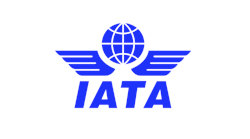WASHINGTON – With Federal Aviation Administration (FAA) reauthorization bills taking center stage on Capitol Hill, a new report highlights the impact of an often unseen part of the aviation industry: maintenance.
The 2016 Global Fleet & MRO Market Assessment prepared by Oliver Wyman for the Aeronautical Repair Station Association (ARSA) was released March 16 at a Capitol Hill briefing. The event, conducted as part of ARSA’s annual Legislative Day, was headlined by House Aviation Subcommittee Member Carlos Curbelo (R-Fla.) and attended by aviation maintenance industry executives and congressional staff.
Steve Douglas, vice president of CAVOK, a division of Oliver Wyman, provided attendees with a maintenance industry overview and the findings of this year’s report. Douglas, a former manager of the FAA’s Aircraft Maintenance Division, noted that the total worldwide market for commercial aviation maintenance is expected to be nearly $68 billion in 2016. The industry, which currently employs 350,000 people worldwide, will approach $100 billion – four percent annual growth – by 2026.
For its part, the U.S. civil aviation maintenance industry employs more than 270,000 people and generates $43.1 billion in economic activity. In total, more than 3,800 American firms scattered through all 50 states perform maintenance, repair and overhaul services. The vast majority of these, close to 90 percent, are small-medium sized businesses employing 50 or fewer people.
“For policymakers the major takeaway from this report is that, although you may not know it, the aviation maintenance industry is part of your state’s economy,” ARSA Executive Vice President Christian A. Klein said. “There are important issues looming in the House and Senate FAA bills that will affect maintenance businesses and their hundreds of thousands of employees nationwide. Each member of Congress needs to pay attention and be mindful of the consequences.”
The report underscores that America is the global leader in this sector but highlights a variety of potential challenges coming over the next decade. Repair stations will have to manage continually increasing cost scrutiny from air carriers and other operators and find ways to leverage new technologies in materials, production, flight data and maintenance techniques.
“With the new generation aircraft coming into the global market over the next 10 years, MROs worldwide will need to adapt to new technology to maintain profitable margins,” Douglas said before the briefing. “Data sharing will become very important with new-generation aircraft and the self-monitoring of systems and components, resulting in gigabytes of data generated on each flight. Properly leveraged, this data is capable of alerting the operators and the MRO of the health of the aircraft systems.”
The report’s executive summary, as well as a fact sheet illustrating U.S. state-by-state employment figures, can be found in ARSA’s economic data center at arsa.org/news-media/economic-data.
ARSA is the only association devoted to the unique needs of the global civil aviation maintenance industry. It is dedicated to helping member companies run their operations more efficiently and effectively, while continuing to ensure the safety of aircraft worldwide. To learn more about the association’s dedicated work on behalf of both industry stakeholders and the flying public, please visit ARSA.org.




